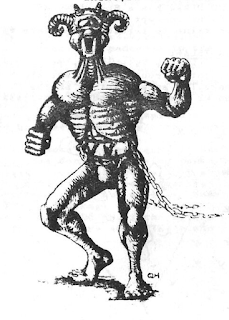Welcome to the tenth entry in the series Original Scenarios Resurrected, wherein D&D scenarios from the 70s and early 80s are republished with the permission of the authors, usually together with extra contemporaneous material. Today is the turn of the previously unpublished sequel to Quest for the Fazzlewood, The Tomb of the Waning Moon from Michicon VIII by Russ Stambaugh. For all entries in the series see here.
From the early 70s Metro Detroit Gamers ran two annual gaming conventions - MichiCon and Wintercon. For Wintercon VII, December 1978, their members John Van De Graaf & Laurie Van De Graaf wrote a tournament adventure Quest for the Fazzlewood, a solo adventure concerning the exploits of Athelfrogg the Agile. MDG published this at the con, and later it was revised and expanded for publication by TSR as O1 The Gem and the Staff (the differences between the two are examined here). Because of this, originals of Quest for the Fazzlewood are amongst the most expensive of all D&D collectibles - and it's also a damn fine scenario.
For the next MDG con (MichiCon VIII, June 1979) another MDG member, Russ Stambaugh, prepared a follow-up adventure for Athelfrogg - The Tomb of the Waning Moon. It was advertised on the front of the program, and as you can see from the illustration it was a two player tournament adventure. Athelfrogg is joined by Balthazar - here they are depicted in the mists outside the Tomb lit by the light of the Waning Moon.The Tomb of the Waning Moon was unfortunately never published, but manuscripts survived and made their way into the hands of collectors. When I was researching my Complete History of 1970s D&D scenarios I came across scans of some pages of this module Adrian had shared on The Acaeum and from what I could see it looked fascinating. When I started this series I contacted Russell to see if he would agree to its inclusion, and I am extremely thankful to him that he has agreed for it to be republished here. As always, all rights are retained by the original author. In addition I also required Adrian's agreement to share his original copy, and thanks to Adrian's efforts we have the scenario I present for you today. Many thanks again, Russell and Adrian!
So, is it any good? Well we had a blast of a time playing it. Read on for my review and the scenario itself...






